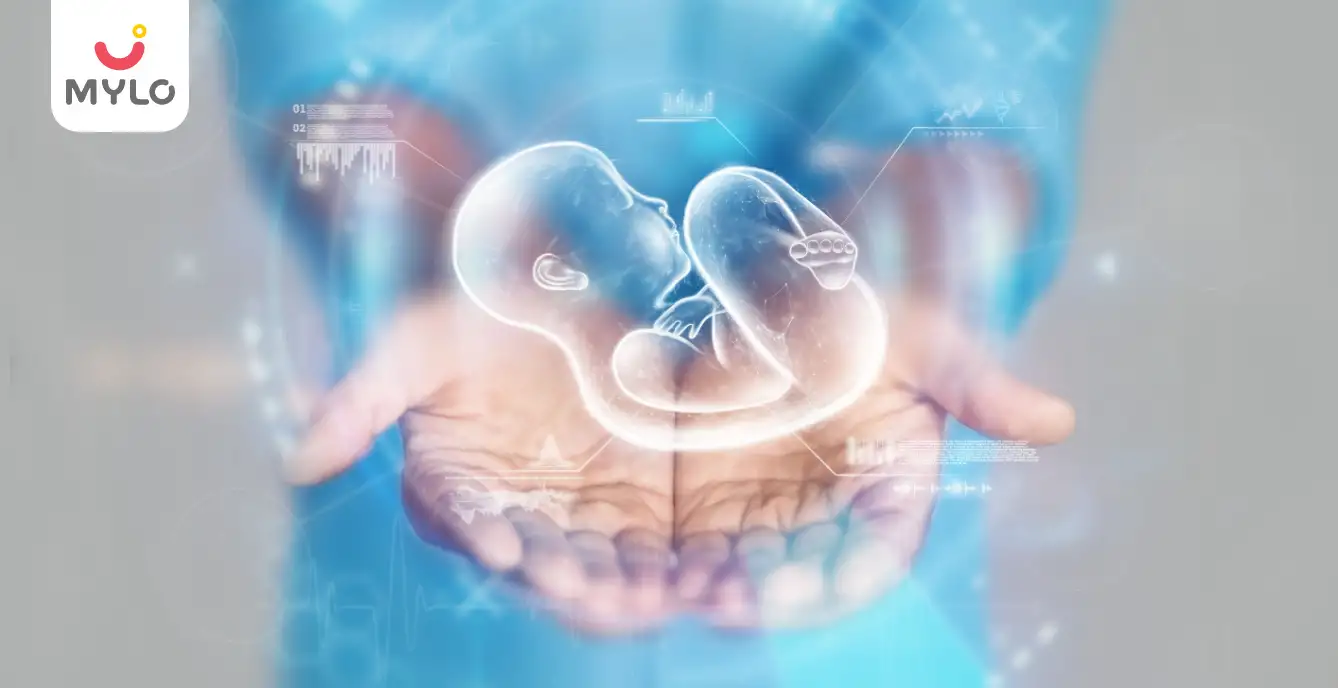Home

Breast Lump

Lump in Breast During Breastfeeding How to Identify, Treat, and Prevent Lump Formation
In this Article

Breast Lump
Lump in Breast During Breastfeeding How to Identify, Treat, and Prevent Lump Formation
Updated on 12 July 2023
Have you discovered a lump in breast during breastfeeding? Don't panic! While it can be concerning, lumps in the breast while breastfeeding are relatively common and often benign. Understanding how to identify, treat, and prevent lump formation is essential for your peace of mind and the well-being of both you and your baby.
This article will explore home remedies for breast lumps during breastfeeding, how to cure breast lump naturally, and other aspects of the topic.
Is Finding a Lump in Breast During Breastfeeding Normal?
Finding a lump during breastfeeding is often a common occurrence and is typically not a cause for alarm. Breast tissue changes during pregnancy and lactation, including increased blood flow and milk production. These changes can sometimes result in the formation of lumps or nodules, which are usually harmless and temporary. Most breast lumps detected during breastfeeding are benign and unrelated to breast cancer.
However, paying attention to any new or unusual lumps is crucial and consult with a healthcare professional for a proper evaluation.
How to Identify a Lump in Breast while Breastfeeding?
Identifying a lump in the breast while breastfeeding is essential for early detection and prompt medical evaluation. Here are some critical steps to help you identify a lump:
1. Regular Breast Self-Exams
Perform regular breast self-exams to become familiar with your breasts' normal texture and feel. This will enable you to notice any changes or new lumps that may arise during breastfeeding.
2. Visual Inspection
Observe your breasts in front of a mirror. Look for visible changes such as redness, swelling, or changes in breast size or shape. Pay attention to any noticeable lumps or areas of thickening.
3. Manual Palpation
Gently feel your breasts using the pads of your fingers. Start from the outer edges and move in a circular motion towards the nipple. Take note of any unusual or distinct lumps, bumps, or areas of tenderness.
4. Consistency and Mobility
Assess the consistency of the lump. Benign breast lumps often feel smooth, firm, and movable within the breast tissue. Suspicious lumps may be challenging, irregularly shaped, or fixed in one spot.
5. Pain or Discomfort
Note any pain or discomfort associated with the lump. While breastfeeding can cause breast tenderness and engorgement, persistent or worsening pain should be evaluated by a healthcare professional.
6. Changes in Breastfeeding
Pay attention to any changes in breastfeeding patterns. If you notice difficulties with milk flow or latching or if your baby seems fussy or unsettled during feeding, it could indicate a problem related to the lump.
What Causes a Lump in Breast During Breastfeeding?
A lump in the breast while breastfeeding can have various causes, some of which are related to the physiological changes that occur in the breast during this period. Here are some common causes of breast lumps during breastfeeding:
1. Milk Duct Blockage
A blocked milk duct is a common cause of breast lumps during breastfeeding. Milk ducts can become clogged due to inadequate milk drainage, engorgement, or pressure on the breast. This can lead to the formation of a firm, tender lump.
2. Mastitis
It is an infection of the breast tissue, often caused by bacteria entering the breast through a cracked or sore nipple. It can result in a painful, swollen lump accompanied by redness, warmth, and flu-like symptoms.
3. Milk Bleb or Blister
A milk bleb or blister occurs when a small amount of milk becomes trapped and forms a white spot on the nipple. It can cause a painful lump and blockage of milk flow.
4. Galactocele
A galactocele is a milk-filled cyst that forms in the breast. It typically feels like a smooth, firm lump caused by a blockage in the milk ducts.
5. Fibrocystic Changes
Some women may have pre-existing fibrocystic changes in their breasts, characterized by forming benign cysts or fibrous tissue.
How to Cure Breast Lump Naturally?
While it's essential to consult with a healthcare professional for proper diagnosis and treatment of breast lumps. Here are a few home remedies for breast lumps during breastfeeding:
1. Warm Compress
Applying a warm compress to the affected breast can help promote blood circulation, reduce inflammation, and relieve discomfort associated with certain breast lumps. Use a clean cloth soaked in warm water and gently place it on the lump for 10-15 minutes daily.
2. Massage
Gentle breast massage can help improve milk flow and relieve breast pain and blockages in milk ducts. Use gentle circular motions starting from the outer edges of the breast towards the nipple.
3. Maintain Proper Breastfeeding Techniques
Ensuring proper positioning and latch during breastfeeding can help prevent milk duct blockages and associated lumps.
4. Breast Emptying
It's essential to empty the breasts during each feeding session adequately. Encourage your baby to nurse frequently and thoroughly drain one breast before switching to another. You can also monitor breasts regularly even if you are experiencing breastfeeding no lump.
5. Good Breast Care
Keep breasts clean and dry to reduce the risk of infections. Use gentle, fragrance-free soaps and avoid harsh chemicals that may irritate the skin. Wear comfortable, properly fitting bras that provide adequate support.
6. Healthy Lifestyle
A healthy lifestyle, including a balanced diet, regular exercise, adequate hydration, and managing stress levels, can contribute to overall breast health.
Remember, natural remedies may provide some relief, but it's crucial to seek medical advice and follow your healthcare provider's recommendations.
How to Prevent Formation of Lumps in Breast while Breastfeeding?
Preventing the formation of lumps in the breast while breastfeeding involves adopting certain practices that promote breast health and milk flow. Here are some tips to help prevent the formation of lumps:
- Proper latching and positioning
- Breastfeed frequently and fully
- Maintain breast health
- Avoid restrictive clothing
- Gentle breast massage
- Manage engorgement
- Avoid nipple trauma
- Monitor breast changes
You may also like: How To Feed A Newborn Baby By Breast?
When to See a Doctor?
It is essential to consult a doctor if you notice any concerning changes or experience specific symptoms related to breast lumps during breastfeeding. Here are some situations when you should seek medical attention:
- New or persistent lump
- Increasing pain or discomfort
- Flu-like symptoms
- Abnormal breast changes
- Worsening condition
- Concerns about breast health.
Key Takeaways
In conclusion, encountering a lump in breast during breastfeeding can be a concerning experience for any mother. However, it's important to remember that many breast lumps during breastfeeding are benign and can be effectively treated and managed. By understanding how to identify, treat, and prevent lump formation, you can confidently navigate this situation.
References
1. Gada, P. B., & Bakhshi, G. (2023). Galactocele. PubMed; StatPearls Publishing.
2. Lee, S., & Bae, Y. K. (2020). Breast lesions during pregnancy and lactation. Ultrasonography.



Written by
Madhavi Gupta
Dr. Madhavi Gupta is an accomplished Ayurvedic doctor specializing in Medical content writing with an experience of over 10 years.
Read MoreGet baby's diet chart, and growth tips

Related Articles
Related Questions
Influenza and boostrix injection kisiko laga hai kya 8 month pregnancy me and q lagta hai ye plz reply me

Hai.... My last period was in feb 24. I tested in 40 th day morning 3:30 .. That is faint line .. I conculed mylo thz app also.... And I asked tha dr wait for 3 to 5 days ... Im also waiting ... Then I test today 4:15 test is sooooo faint ... And I feel in ma body no pregnancy symptoms. What can I do .

Baby kicks KB Marta hai Plz tell mi

PCOD kya hota hai

How to detect pcos

RECENTLY PUBLISHED ARTICLES
our most recent articles

Developmental Disorders
Understanding Down Syndrome: A Comprehensive Guide for Parents

Breast Milk
No Breast Milk After Delivery: What to Do & What are the Factors Responsible

Lactation Issues
Lactation Failure: A Comprehensive Guide to Understanding the Causes and Solutions

Breast Pain
Breast Pain During Pregnancy: What to Expect and How to Find Relief

Care for Baby
Baby Spit Up: The Ultimate Guide to Causes, Prevention, and Management

Infertility
Unexplained Infertility: Breaking Down the Factors and Finding Solutions
- Mulethi: Unraveling the Therapeutic Potential of Licorice Root for Your Overall Health
- 5 Steps to a Healthy Lifestyle: The Blueprint for Your Wellness Journey
- Chandraprabha Vati: How This Potent Ayurvedic Formulation Can Boost Your Health
- Trichomoniasis: Meaning, Symptoms, Causes and Risks
- Gallstones in Pregnancy: Symptoms, Complications & Treatment
- Fertility Massage: A Holistic Approach to Boosting Fertility Your Chances of Conception
- Baby Vomiting After Feeding: Understanding the Causes and Solutions for Upset Stomach
- Why do you need to wear a high waisted panty during pregnancy?
- Top 5 Precautions You Should Take After Getting an IVF Treatment
- Baby Kicking During Pregnancy: Unveiling the Wonders of Quickening in Pregnancy
- Daddy duties: Here's your guide to fatherhood
- Four-weeks old baby: Health, growth, care and more
- Baby cloth diapers by Mylo
- When to begin toilet training your child


AWARDS AND RECOGNITION

Mylo wins Forbes D2C Disruptor award

Mylo wins The Economic Times Promising Brands 2022
AS SEEN IN
















- Mylo Care: Effective and science-backed personal care and wellness solutions for a joyful you.
- Mylo Baby: Science-backed, gentle and effective personal care & hygiene range for your little one.
- Mylo Community: Trusted and empathetic community of 10mn+ parents and experts.
Product Categories
baby carrier | baby soap | baby wipes | stretch marks cream | baby cream | baby shampoo | baby massage oil | baby hair oil | stretch marks oil | baby body wash | baby powder | baby lotion | diaper rash cream | newborn diapers | teether | baby kajal | baby diapers | cloth diapers |








